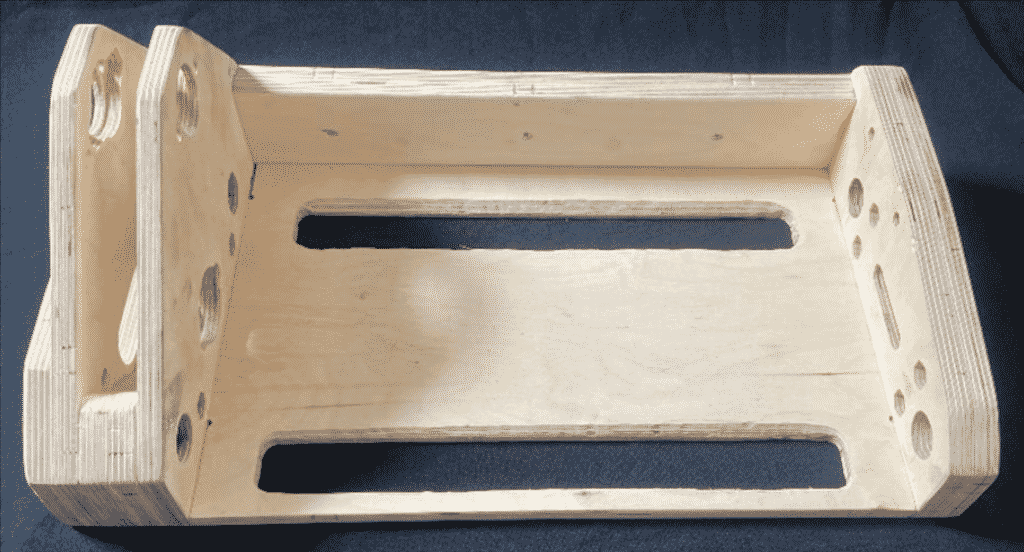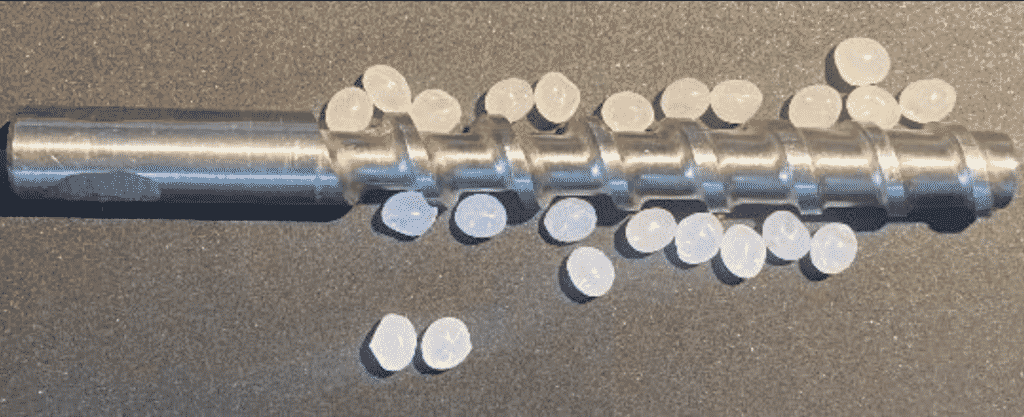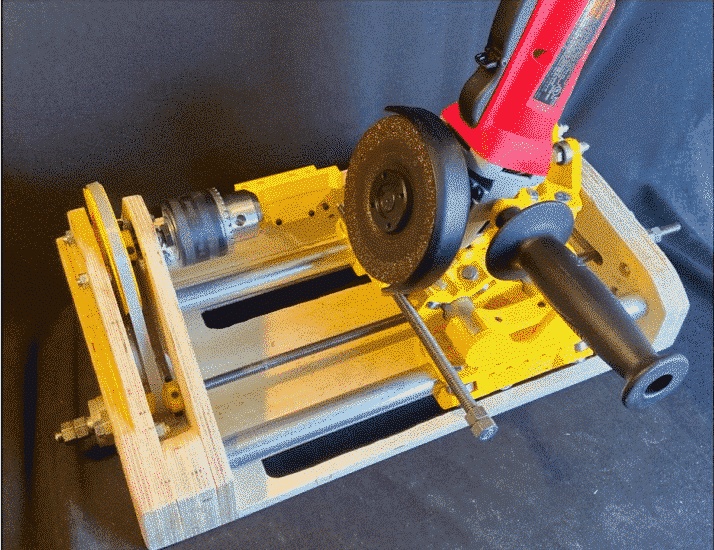Joshua Pearce, a 3D printing innovator, and professor at Michigan Technological University (MTU), worked with MTU colleague Jacob Franz to create an open-source grinding machine for compression screw manufacturing.
Dr. Pearce, who has been advocating advances in open-source 3D printing technology, led the project, which produced a low-cost, easy-to-copy open-source machine. According to reports, the cost of the device is less than $155, and it has been proven to be able to replicate commercial screws, while providing users with greater flexibility to make their own. Grinding machines can make the manufacturing toolchain more self-sufficient and at the same time reduce the costs and waste currently associated with producer 3D printing.
The researchers said: “The grinding equipment can successfully manufacture custom extruded screws, thereby radically reducing the cost of one of the core components of the desktop-sized open-source FPF 3D printer.” “This capability will enable the manufacturer community to use Low-cost screws, which benefit the circular economy based on distributed recycling and additive manufacturing.”
Open source inspiration for grinders
Inspired by innovations in the open-source software movement, the duo claimed that despite being 15 years behind, similar things are happening within the hardware community. Platform technologies such as the Arduino electronic platform and the RepRap project continue to drive this “open hardware” movement. The RepRap project aims to create a 3D printer capable of printing its own components, thereby radically reducing the cost of entering 3D printing. Not only has this created millions of free and open-source 3D printable designs, but it can also be said to be a professional manufacturer.
RepRap printers are now used in applications ranging from toys to end-use scientific tools, and 3D printing companies understand the challenges posed by this form of distributed manufacturing. Users can now completely eliminate distribution needs and produce parts at lower prices. Nonetheless, these savings are based on melt filament processing (FFF) 3D printing, while commercial filaments are usually priced at around $20 per kilogram. At the same time, the cost of pure plastic particles per kilogram is only about 1-5 US dollars, and researchers began to consider how to reduce the dependence of producers on printing filaments, thereby reducing costs.
Previous research has shown that by using open source waste plastic extruders or “recyclebots”, it is technically feasible and cheap to use distributed manufacturing for manufacturing. Moreover, since the energy and pollution caused by transportation between processing steps will be eliminated, the environmental benefits of distributed recycling and manufacturing are obvious. Unfortunately, although many widely used plastics can be recycled for FFF, the melt solidification stage of recycling robots will reduce the performance of the resulting objects and limit their recycling capabilities.
On the other hand, using an open-source waste plastic granulator to grind post-consumer waste will no longer be necessary to completely extrude the filaments by making flakes or pellets and printing directly from them. After the initial product is created, the molten particle manufacturing (FPF) system can shred or reuse recycled plastic fragments, thereby reducing waste. Many FPF 3D printers are currently being developed, such as the Gigabot X open-source industrial system, but they are usually more expensive than similar FFF products.
This is largely due to the cost of precision-machined compression screws, which are also used in commercial recycling robots. In addition, although early testing of desktop FPF printers is promising, their ability to handle larger particles has been limited due to the use of commercially available small compression screw designs. As a result, the researchers developed an open-source alternative grinder, which they hope will maximize the potential of FPF 3D printing.

Create an open-source grinder
In the spirit of the RepRap method, FPF can be used to manufacture many components used to manufacture grinding machines. Inspired by the current lathes used in wood and metal processing applications, the functionality and cost-effectiveness of system components have been selected.
Although the frame of the machine is currently made of plywood, it has low cost, strong performance, and strong adaptability. However, all 3D printing components can be printed using polylactic acid (PLA) and thermoplastic elastomer (TPE). To produce its prototype, the MTU team 3D printed its components using the Lulzbot Taz 6 system. Although CNC wood milling machines are used to produce plywood parts, the team acknowledges that woodworking saws or drilling machines can also be used as temporary replacements without CNC wood milling machines.
Once the equipment was assembled and the 3D printed parts were installed, the researchers performed machine characterization and demonstration testing of their inventions. The total cost of the machine is less than $155, which does not include cutting tools used to process compression screws, and tests have shown that it can cut screws up to 110 mm in length. Several example screws were manufactured to show the adjustable parameters of the system. These not only match the diameter of the purchased screw, but also have an improved channel depth to allow larger plastic pellets to enter the extruder.
In the end, although the researchers’ grinder proved to be able to process compression screws in a way that was easier to lend to FPF printing; it did show some flaws. For example, machines currently rely on mechanical transmission to determine screw parameters, which can be time-consuming. Nevertheless, the system is still considered fully functional, and given the open-source nature of the machine design, the MTU team is confident that manufacturers and producers will improve the performance of the grinder in the future.
The researchers said: “The device not only has the ability to replicate commercial screws, but also provides manufacturers with greater flexibility to make it possible to customize screws.” “By making manufacturers space, fab laboratories, companies and universities The ability to quickly manufacture compression screws at a price that is approximately the cost of the bar material increases this DRAM toolchain, which contributes to circular economy goals based on distributed recycling and additive manufacturing,”
For producers and manufacturers who want to reconstruct the researchers’ 3D printing design, an open-source paper called “Open Source Grinding Machine for Compression Screw Manufacturing” and assembly instructions can be found here.

Joshua Pierce’s invention of additives
Professor Pierce has been advocating the benefits of open source 3D printing, and reportedly even opened a RepRap 3D printer course. As a result, his work often leads to the creation of products that can enhance or create new open source applications within AM.
For example, in July 2017, Pearce led a study aimed at evaluating the possible cost savings of 3D printed toys and games at home. Using FDM 3D printers with many different filaments, the researchers found that they could reduce costs by more than 75%. In another study, Pearce identified Casio straps, ice trays, and mobile phone cases as products that may be cheaper than 3D printing. The cost savings of this project range from 75% to 92%.
Similarly, Pearce conducted a study in January 2018 that invented a method of 3D printing notch mold components, which previously could only be machined from stainless steel. The new method reduces the price of ordinary slot die castings from nearly $4,000 to 25 cents.

